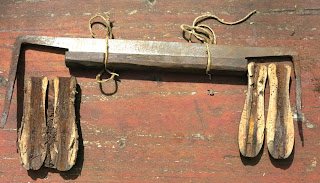The main way of travelling is by public jeep that you can book at the jeep and bus stands. At around 120 Rs, that is £1.20 per person, they are more expensive than the buses but are far quicker and more reliable.
The issue is just how many people they fit in. 3 rows of seats and 4 people to a row, including 3 next to the driver. Try it one day in a 4x4 and then go off roading. We often booked 3 seats instead of 2 for that extra bit of comfort, if indeed you can call a 4 hour journey bouncing up and down and being thrown side to side as the driver tries to overtake a lorry on a blind bend with a 300 foot drop next to you and no safety barrier on the road, comfort. The average speed is 13 miles per hour.
We got to Mangan in North Sikkim, and met Tenzing, who we had arranged to stay with. We waited for hours while he got the necessary permits to stay in this part of the world. This is traditional Lepcha land and foreigners need permits to visit for up to 5 days at a time.
Lepcha houses usually have the kitchen as a separate building, in this case the orange one on the left
The kitchen is the heart around which daily life revolves. The stove is built from local clay and has 2 hotplates. Smoke rises into the roof and out through the eves and covered chimney hole on top of the roof. Most of this building has a ceiling, apart from above the stove. The slatted platform above the stove is used for drying stuff. The red meat hanging from the ceiling is mainly fat which is used for frying.
Lucy and Tshering. This is the view opposite the stove.
Prayer flags on the walk up to a traditional Lepcha house
As with the rest of the world concrete is taking over as the building material of choice. This is expensive and not environmentally friendly. I had a few talks about this with our hosts. Concrete houses cost more than traditional wooden Lepcha houses. Another issue is earthquakes. A concrete house is destroyed and cannot be recycled or reused, a traditional house has more flexibility built into it. Centuries of design have considered material and environmental needs, and with traditional materials, if the worst happens then they can be reused to some extent.
The square holes at the bottom of this post are for tying animals to. This understorey is used for housing animals, often year round, as there are no fields on the very steep mountain sides.
Tenzing having a go with my hook knife.
.jpg)

.jpg)























































